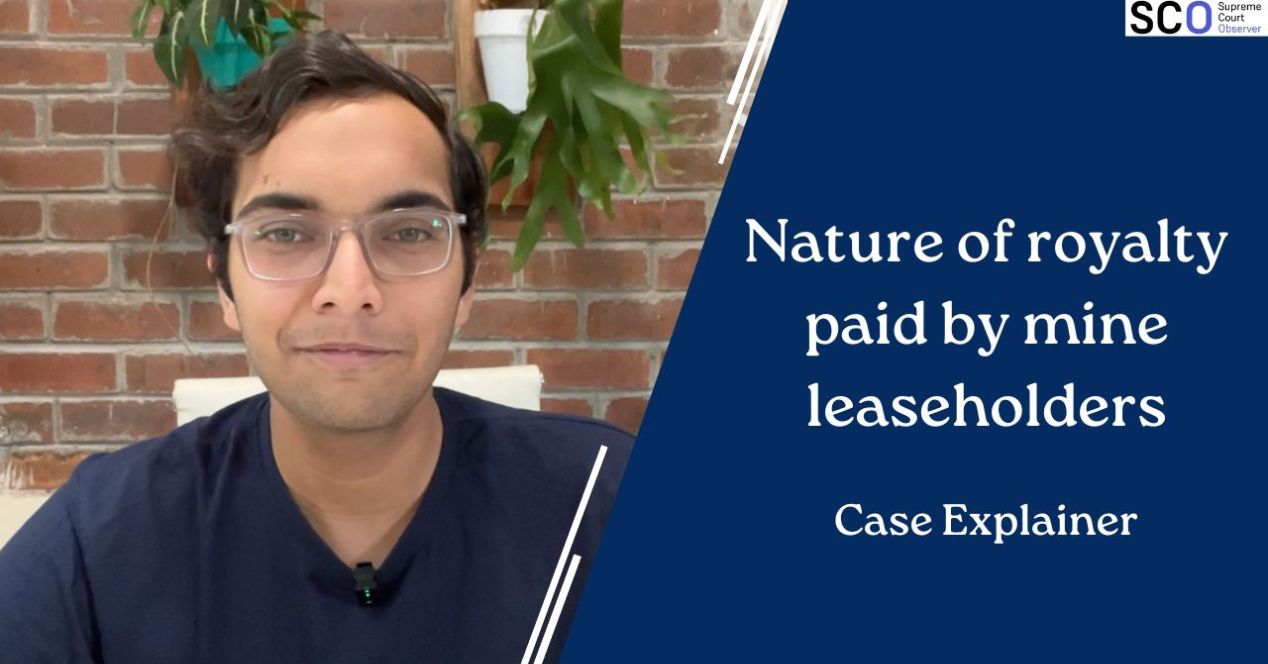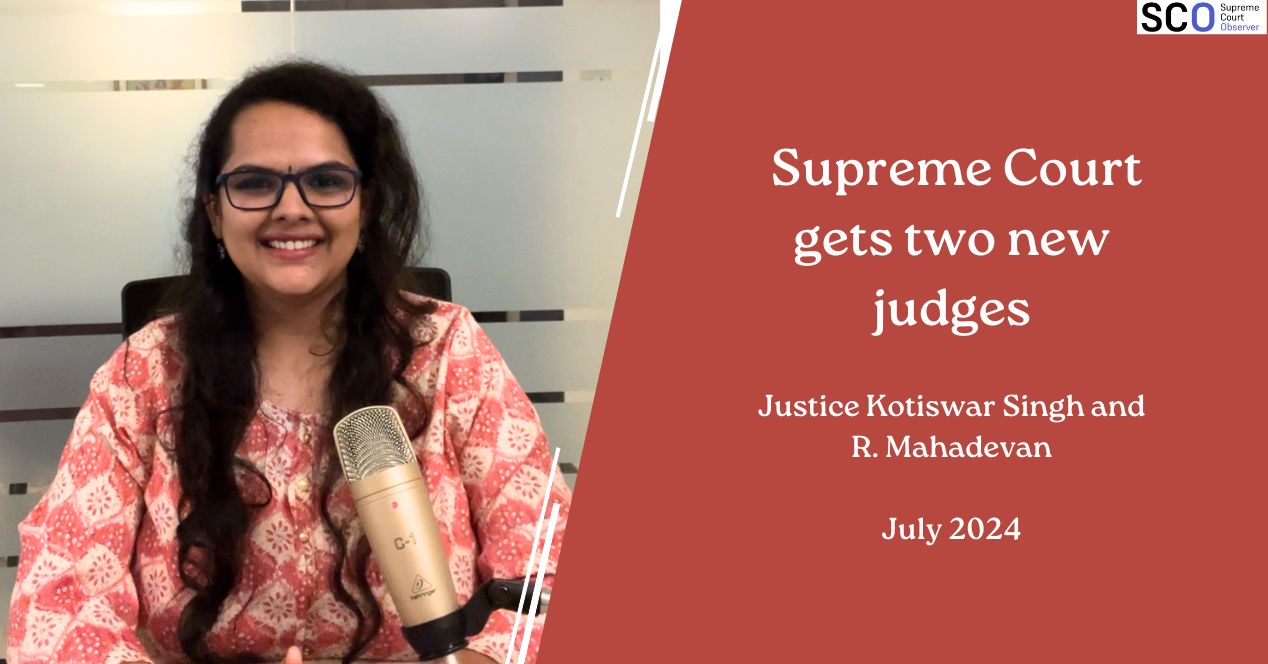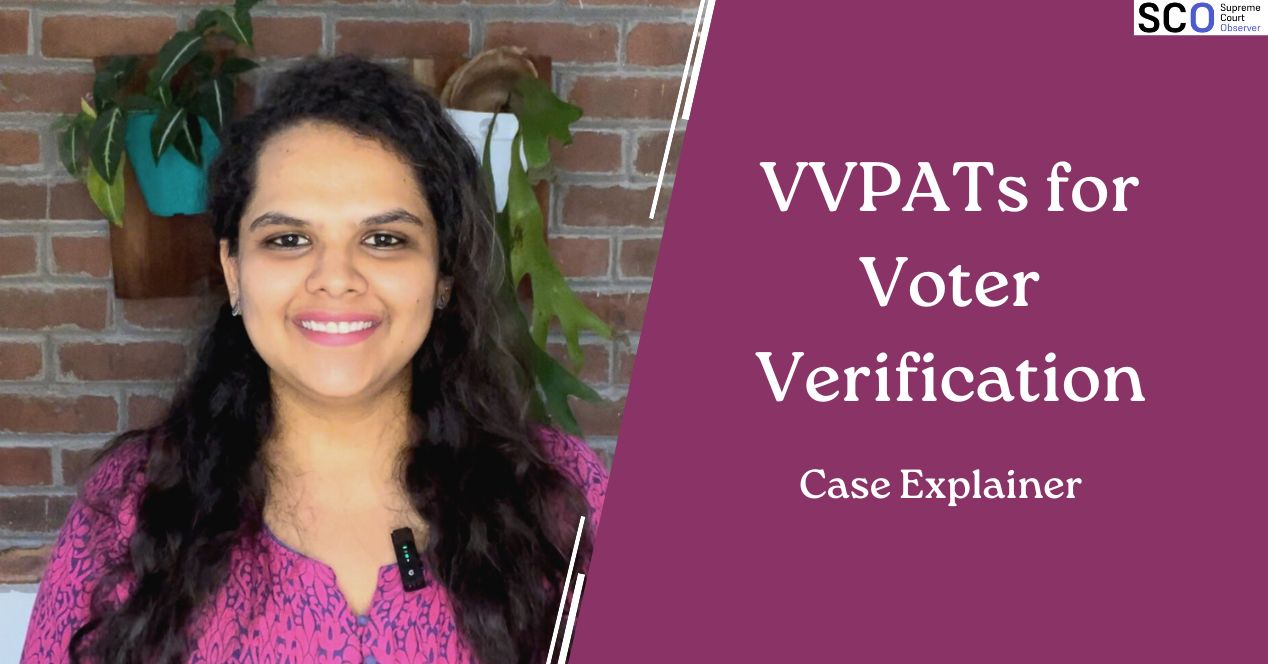Channel
State’s power to tax mines and minerals: Judgement Explainer
The Constitution Bench of the SC upheld the state governments’ power to tax mines and minerals in an 8:1 majority. Why does this matter?
Transcript
Hello everyone and welcome to SCO’s Channel! I am Advay Vora and I’m here to tell you about a big constitutional question that nine judges of the Supreme Court answered on 25 July.
The Constitution Bench of the Supreme Court upheld the state governments’ power to tax mines and minerals in an 8:1 majority. So why does this judgment matter? Revenue from mineral taxation is vital for states like West Bengal and Jharkhand. The Union government has argued that the constitutional framework allows them to claim power over mineral development through a law. They had also argued that they must have control over mines and minerals in the interests of the common good. Eight out of nine judges held that states do have the power to collect taxon mines and minerals in the country.
Chief Justice D.Y. Chandrachud authored the majority opinion for himself and seven other judges.The sole dissenting opinion was authored by Justice B.V. Nagarathna. She cautioned that allowing states to impose tax on mines and minerals would have “grave economic implications.”
We’ll get into that in detail a little bit later. First, let’s talk about states power to tax on mines and minerals under Entries 49 and 50 of the State List. The majority held that state governments were empowered to impose tax under both Entry 49 and Entry 50. Entry 49 is a general entry that allows states to collect taxon lands and buildings. Entry 50 says that state legislatures can make laws for collecting tax on mines and minerals. The appellants, mainly state governments of Jharkhand, Andhra Pradesh, Uttar Pradesh and Odisha, had argued that land under Entry 49 would include mineral land, even though it expressly does not say it. Further, they argued that the quantum of tax could be calculated on the basis of the value of minerals extracted from their mineral land. The majority judgment agreed with this view. It rejected the respondents’ arguments that the tax could not be collected under Entry 49, mainly because it does not mention tax on mineral rights. Doubling down, the majority also held that state governments could collect tax under Entry 50.
Entry 50 expressly provides the power to tax on mineral rights. This Entry however, also says that state governments power is subject to any restriction imposed by Parliament for “mineral development.”
The Chief noted that the Mines and Minerals Development and Regulation Act does not expressly impose such a restriction yet. The Chief also said that such restrictions, if expressly imposed, could altogether prohibit the collection of tax under Entry 50, but clarified that such a restriction cannot be imposed under Entry 49 for collecting tax on land. Lastly, the majority held that Parliament could not invoke residuary powers exercised under Entry 97 of the Union list to restrict a state’s taxing power.
Justice Nagarathna disagreed with the view that state governments could use Entry 49 of the State List to collect taxon mines and minerals. She pointed out that allowing this will lead to double taxation asstate governments now have the opportunity to collect tax on the basis of two Entries. She warned that now, Entry 49, a general entry, had the potential to make 50 specific entries redundant. She cautioned that this would result in “unhealthy competition”and “heightened crisis” between the states. As states can now collect taxes despite limitations imposed by Parliament. It would become a “race to the bottom,” she said.
Now, let’s talk about the second big issue. Are royalty and tax the same? A key question in the case concerned whether the nature of royalty paid by mine owners is a form of tax. During the hearings, mining companies had argued that the royalty prescribed by the Union, under Section 9 of the Mines and Minerals Development Act is in the nature of tax. The majority held that royalty is “conceptually different” from a tax. A royalty, the majority clarified, is a financial obligation arising from a lease deed. It is basically a contractual relationship between a mining lessor and a lessee. The landowner could be either the state government or a private person. Therefore, it does not fulfill the characteristics of a tax.
In doing so, the majority overruled the seven-judge bench decision in India Cements v State of Tamil Nadu and several other cases in which the court has held that royalty is a tax. Justice Nagarathna held that royalty under Section 9 of the Mines and Minerals Act is a “compulsory exaction” and it has fulfilled all the parameters that need to be considered for something to be a tax. She, however, clarified that royalty and tax are only similar in the context of the Mines and Minerals Act and nothing else. She reasoned that the statutory scheme of the Mines Act makes it evident that royalty is a “compulsory exaction” and is therefore in the nature of a tax.
Further, the rate for this was prescribed by the Union government. She observed that the royalty acts as a limitation to Entry 50 of the Union List that we talked about before because it was carried out in the interest of mineral development, she said. In her dissent, she also stated that Kesoram Industries v State of West Bengal, a 2004 judgment, which held that India Cements had a typographical error when it said that royalty is a tax, must be overruled. She highlighted several reasons to overrule Kesoram Industries instead.
First, she stated that Kesoram Industries, being a five judge bench, did not have the competence to comment on the decision of India Cements, which was a seven judge bench.
Second, she said that the 2004 judgment did not take into consideration other factors which were considered by India Cements, when it concluded that royalty is in fact a tax. Subsequent judgments, she stated, reaffirmed India cements and brought an informed closure to the issue.
Most notably, she noted that Kesoram Industries disregarded the adverse economic consequences of overruling India Cements, even while holding that states must not be allowed to tax twice, Justice Nagarathna warned of the cascading effects the majority’s decision may have an economic stability in the mines and minerals industry.
Justice Nagarathna found that there would be an uneven increase in cost of minerals, resulting in a domino effect of increase in prices of all related goods and services. She pointed out that non-mineral extracting states would resort to imports, hampering the foreign exchange reserves of the country. This, she described, would lead to a breakdown of the federal structure of the Constitution In context of mineral development. She observed that there will be a slump in mining activities in states having a huge deposit of minerals as mine owners and miners would be disincentive by the double levy of tax.
Lastly, she stated that there will be unhealthy competition among miners who would attempt to obtain mining leases in states that do not wish to levy double tax above the royalty. After the pronouncement, counsel present in the court, including Senior Advocates Arvind Datar, A.M. Singhvi and Rakesh Dwivedi had a seminal question for the bench: does the July 25th judgment apply prospectively or retrospectively? They pointed out that so far most courts had relied on India Cements to declare that royalty was a tax. As the majority differentiated the two, it would effectively overrule all of them. Solicitor General Tushar Mehta stated that retrospective applications would create complications with return of funds between the Union and the states. Dwivedi, appearing for the state of Jharkhand, appeared to disagree with Mehta.The Chief decided to hear both sides next week. He directed the parties to make brief submissions for not more than ten minutes on Wednesday (31 July 2024).
So tell us what you think about the Court’s decision and stay tuned to scobserver.in for a summary of the judgment, a matrix breaking down the majority and dissenting opinion and a lot more.
Thank you for watching! See you later.




